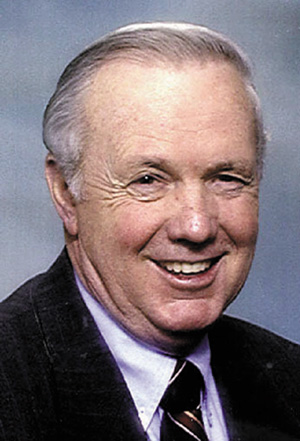No. 457 - WHY SOME PEOPLE MAY DISAGREE WITH YOU!
No. 457
Jim DavidsonÉNEWSPAPER COLUMN
WHY SOME PEOPLE MAY DISAGREE WITH YOU!
Several weeks ago I acquired some knowledge that has been very helpful to me. For what itÕs worth, I would like to share the essence with you, in the hope that you may benefit as well. If you have ever wondered why your thinking was so radically different from other people, especially people who are younger or older, you might consider very carefully what I am going to share. I have a good friend, Dr. Don Bradley, who is a professor of marketing and executive director of the Small Business Advancement National Center that is located on the campus of the University of Central Arkansas.
At my invitation, Dr. Bradley came and spoke to our Lions Club recently and he talked about the Generational Diversity in Small Business. Granted you may be way ahead of me here, but for the past several years I had been hearing terms like Traditionalists, Baby Boomers, and Generation X. While I had a general idea of what each one meant, I had never had anyone break it down into specific years, when each of these generations started and ended, and also fill in the gaps to complete the picture. Now this in itself is not that earth shattering, but when Dr. Bradley pointed out the major events in the time frame for each generation that shaped their attitudes and values, a light came on in my head.
The important point in the beginning is to realize that each generation possesses a unique set of identifying characteristics. Here is the breakdown of the different generations, Traditionalists (1920-1945), Baby Boomers (1946-1964), Generation X (1965-1980), Nexters (1981-1999) and Cuspers, is a term used to identify anyone born from 1 to 2 years between the generations. To be sure, this is not hard and fast, but if you will take the year of your birth and match it up with the generation identified here, you may discover some information that will help you relate much better with those who were born in a different generation. As I said earlier, this has been a tremendous help to me. Since I was born in 1938, I am a Traditionalist, which will explain the basis for many of the attitudes and values that I have presented in my column over the years. You probably have heard the saying, "The one who pays the fiddler calls the tune." This is certainly true for the Traditionalists. While we make up only 25 percent of our nationÕs work force, we own 75 percent of all the financial assets in the world. Some of the things that shaped our mindset were World War II, Great Stock Market Crash of 1929, The Great Depression, Lindbergh's first transatlantic flight, The New Deal and the establishment of Social Security.
The Baby Boomers, the generation that started at the end of World War II, are for the most part optimistic and positive, believe in growth and expansion, believe in radical change, are compelled to challenge authority and believe they will never grow up, grow old, or die. Some of the world events that shaped the mindset of the Baby Boomers include the Civil Rights Movement and later the Civil Rights Act, the first man to walk on the moon and the Vietnam conflict. This is my own personal view, but I believe the fact that women worked while men were away fighting the war and had money for the first time, plus the resulting power, changed the course of history for our country.
Here are some of the events that shaped the mindset of the Gen Xers, as they are referred to. Our nation experienced a time of abundant technological change, the divorce rate exploded, so this generation is extremely skeptical, their view is more global and they want to have fun as they work.
The last group which have been called the Nexters, are looking to constantly improve themselves. They were born with the technology of Generation X and this technology made them connected to the world at a young age. For the most part, the Nexters generation has a very realistic outlook.
The Cuspers, the last group, were born between two generations. Whether they are young or old, they have experienced both generations and therefore have a combination of characteristics from each generation. These people are very beneficial for organizations and can help to bridge the gap between two consecutive generations.
Here is what I learned from Dr. Bradley. When I see people act and behave in a negative way, I consider their age and the societal influences on their life. While I may not agree, I can better understand why they act the way they do. (Jim Davidson is a motivational speaker and syndicated columnist. You may contact him at 2 Bentley Drive, Conway, AR 72034)
